

How People
Treat
"Other People"
History of the 45th Surgical Hospital
Brinton Motherals Super 8 Videos
|
REMEMBER THIS WAS WRITTEN IN THE SUMMER OF 1971... |
|
|
|
|
| 23rd Infantry Division (Americal) The 23rd Infantry Division (Americal) is the largest infantry division operating in South Vietnam with three light infantry brigades and a squadron of armored cavalry. The division got its start in the rugged terrain of Military Region 1 in mid-April 1967 when it was known as Task Force Oregon. Its mission at that time was to ease pressure on Marines operating near the Demilitarized Zone (DMZ). Throughout 1970 and early 1971 the men, "under the Southern Cross," continued to aggressively pursue their mission in Quang Tin and Quang Ngai Provinces. The heavily populated and rice-rich coastal plains were protected from severe enemy threats; the trace of control held by the government of the Republic of Vietnam was firmly extended and promoted throughout the area; and North Vietnam regular and Viet Cong forces were interdicted and destroyed in Operations Frederick Hill, Geneva Park and Pennsylvania Square. Pacification operations, an integral part of the 23rd's program, were increased monthly, reaching a high of 560 in December 1970. When typhoons Kate and Joan hit in October and November 1970, the 23rd Division reacted swiftly to bring relief to thousands of refugees. Large quantities of food and building supplies were provided and engineer units cleared roads and rebuilt bridges. |
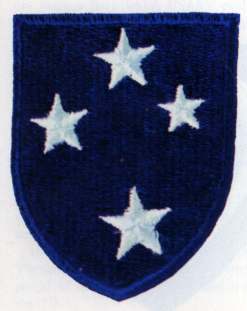 |
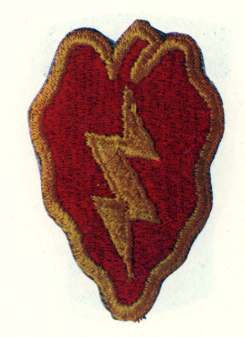 |
25th Infantry Division Shortly after its inception in October 1941, the 25th Infantry Division was called to defend the shores of Hawaii after the attack on Pearl Harbor. From there, the Tropic Lightning troops were on the offensive throughout the Pacific penetrating Japanese strongholds. They helped occupy Japan after the war until called into Korea for three years, where they earned the Koren Presidential Unit Citation. From 1963, when the Division began providing men for the Vietnam conflict, until redeployment began on Dec.15, 1970, back home to Hawaii, the men of the 25th fought many bloody battles to break traditional Viet Cong lines of communications, supply and liason routes between the Mekong Delta and the North. In addition, division soldiers showed genuine compassion for the problems of the South Vietnamese through their civic action programs. For these efforts, the 25th Infantry Division was awared the Vietnamese Cross of Gallantry with palm on Jan. 28, 1969. |
| 1st Cavalry Division (Airmobile) From its activation at Fort Bliss, Texas, on Sept.13, 1921, through World War II and Korea, until today, the 1st Cavalry Division (Airmobile) has recorded a series of unparalleled firsts. During World War II, the 1st Cav was the first unit into Manila and the first in Tokyo. Then in Korea, the Cav was the first unit to move into Pyongyang, the capital of North Korea. On July 1, 1965, at Fort Benning, Ga., this unit became the U.S. Army's first airmobile division. Arriving in the Republic of Vietnam on Sept.14, 1965, the Cav became the first American division to serve in all four tactical zones. The division won a Presidential Unit Citation by routing heavy North Vietnamese concentrations around the Ia Drang Valley west of Pleiku during its first year of operation. The 1st Cav is the only division to receive a second Replublic of Vietnam Cross with Palm. During May and June of 1970, Skytroopers again proved the airmobile concept really works as the ment of the 1st Cav dealt an unprecedented loss to the enemy. The 1st Cav and units under the Cav's operational control moved into the Cambodian enemy storage sanctuaries and captured large quantities of Communist supplies and accounted for more than 2,500 enemy dead. |
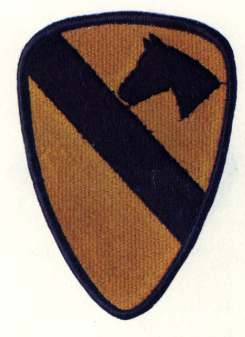 |
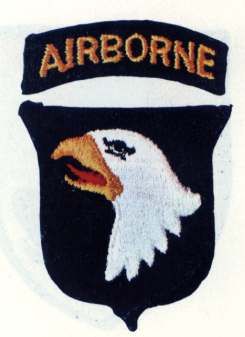 |
101st Airbourne Division (Airmobile) The 101st Airborne Division (Airmobile) was activated on Aug. 1942, at Camp Claiborne, La. After months of arduous training, drills and practice jumps, two parachut infantry regiments and two glider regiments landed in England in the fall of 1943. The division made history on D-Day, June 6, 1944, when it jumped, 14,000 strong, into occupied France. The division's fortunes fluctuated after World War II, and it was inactivated and reactivated as a training division three times in 11 years. On July 29,1965, the 1st Brigade and support troops arrived at Cam Ranh Bay to begin the next chapter of the Screaming Eagles' combat history. The remainder of the division was in-country by Dec. 13, 1967, and a year later, more than 10,000 enemy had died at the hands of the 101st Airborne Division (Airmobile). The division's mission has carried it into all four of the Republic of Vietnam's military regions. It has successfully defended the U.S. Embassy in Saigon, the Bien Hoa Air Base and the coastal city of Phan Theit. The Division also distinguished itself in spearheading a series of operations, driving the NVA out of the infamous A Shau Valley. During the Cambodian offensive in May and June of 1970, Task Force 3/506 drove into NVA and VC sanctuaries near Prek Drang. The Communists were caught by suprise adn overrun by the Screaming Eagles, who smashed what had taken the NVA four years to build. |
| 173rd Airborne Brigade The 173rd Airborne Brigade - nicknamed the Sky Soldiers - was formed in May 1963 and became the first major U.S. Army ground combat unit to fight in the Republic of Vietnam, arriving in May 1965. The Brigade concluded in January a pacification program which was begun in April 1969 and carried through six phases. Among it accomplishments, the 173rd contributed to the improvement and modernization of the Republic of Vietnam Armed Forces (RVNAF), particularly the Regional and Popular Forces. It helped to reduce the Viet Cong infrastructure and helped develop the local Rural Cadre and People's Self-Defense Forces, to enable the South Vietnamese to protect their own key populated areas and bridge sites. Also, the Brigade continued to maintain security for portions of QL1, South Vietnam's only major north-south highway. The Sky Soldiers have received three unit citations for their achievements in distinguishing themselves in the Battle of Dak To during November 1967. Brigade elements fought an entrenched North Vietnamese Army regiment on Hill 875. In some of the most bitter fighting of the war, they captured the hill on Thanksgiving Day. More than 800 enemy were killed. It also has the Meritorious Unit Citation for the period May 3, 1965, through May 31, 1967. The Brigade's most recent award is the Vietnamese Cross of Gallantry with Palm (Gold) for the period May 5, 1965, through Sept. 26, 1970. |
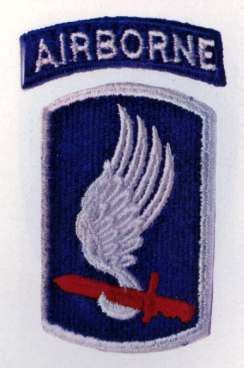 |
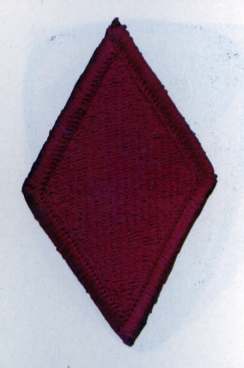 |
1st Brigade, 5th Infantry Division (Mechanized) The 5th Infantry Division was organized in December 1917 to participate in World War I. It arrived in France in May 1918, where the German enemy gave the men of the division their name, Red Devils. During World War II, the 5th deployed to Iceland, England and Ireland before taking part in the invasion at Normandy. In July 1968, the 1st Brigade of the 5th Infantry Division (Mech.) was deployed for overseas duty in the Republic of Vietnam, while the remainder of the division stayed at Fort Carson, Colo. The mission of the 1st Brigade is twofold: to conduct major operations against NVA elements and to provide peace and freedom to the residents of the Quang Tri area. The Brigade divides its time between search and clear, cordon and sweep operations, working with the Army of the Republic of Vietnam. In November 1970 the Red Devils were honored by President Nguyen Van Thieu for their recovery operations following the disastrous floods in Quang Tri Province. Also, the last months of 1970 and early 1971 saw a massive resettlement program for South Vienamese conducted by the brigade. Elements of the 1st Brigade swept down Route 9 in early February 1971 to join the reoccupation of the abandoned Marine base at Khe Sanh as part of the huge operation to eliminate a North Vietnamese buildup along the Laotain frontier. |
| 11th Armored Cavalry Regiment From its birth as a horse cavalry regiment at Fort Meyers, Va., in 1901 to its present status as a light armored, completely mobile reconnaissance force, the 11th Cav had continously added to its proud tradition. Soon after it was formed, the regiment won its spurs in the Philippines and it was in these trying first years that the Blackhorse earned its motto, "Allons" (Let's Go). Since then the regiment has served in the Mexican War, World War II and now in the Vietnam conflict. The regiment arrived in the Republic of Vietnam in September 1966. A variety of missions, from clearing roads to dislodging enemy forces from almost inaccessible jungle areas, had taken the regiment from southeast Long Khanh Province to An Loc in northern Binh Long Province. The 11th Armored Cavalry Regiment took a lion's share of the forts to cut off the infiltration routes which spread from the Cambodian border through the provinces of South Vietnam. After that the Blackhorse relocated to the Saigon area of MR3 and launched Vietnamization and pacification programs. On Feb. 1, 1971, the unit began a stand-down with its 1st and 3rd Squadrons. |
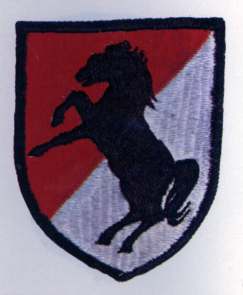 |
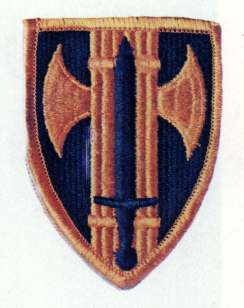 |
18th Military Police Brigade From escortin mini-skirted singers to guarding military points, from patrolling the streets of Hue to keeping the highways of the Delta open, the role of the 18th Military Police Brigade in the Republic of Vietnam is diversified. Established on May 20, 1966, and sent to South Vietnam on Sept. 26, 1966, the Brigade controls all non-divisional MPs from the DMZ down to the middle of the Delta. It is the command element for two MP groups, seven MP battalions, seven infantry companies, a criminal investigation group and a transportation company river patrol boat. The 18th MP Brigade has been used in a combat support role in addition to its normal police function. In this combat support role the MPs provide convoy escorts, highway and bridge security, refugee and detainee evacuation and traffic control. The 18th MP Brigade also has control of a 22-square-mile area as its own tactical area of responsibility. This responsibility covers not only military operations but also civic action programs. |
| 18th Engineer Brigade The 18th Engineer Brigade was formed July 29, 1921, as the 347th Engineers (General Service) in the Organized Reserves. It was ordered into active military service May 6, 1942, at Camp Claiborne, La., and redesignated the 347th Engineer General Service Regiment. For its service in Normandy, northern France, the Rhineland and Central Europe during World War II, the unit received the Meritorious Unit Commendation. After the war, it was deactivated in Germany, July 16, 1965, it was activated at Fort Bragg, N.C., and prepared for deployment to Vietnam. An advanced party of the brigade arrived in the Republic of Vietnam on Sept. 3, 1965, and became operational two weeks later. Many of the Brigade's projects stand out as exceptional engineering feats. Among them was the contruction of the critical Hai Van Pass, a job attempted by many but accomplished by the 18th Brigade, and a storage area in Cam Ranh Bay, two years in construction and enclosing 191,700 square feet. The brigade has also been actively engaged in road building and land clearing, as well as numerous civic action projects. The accomplishments of the 18th Engineer Brigade have not only contributed significantly to the success of combat forces in Military Regions 1 and 2 but have provided valuable assets to the future development and growth of South Vietnam. |
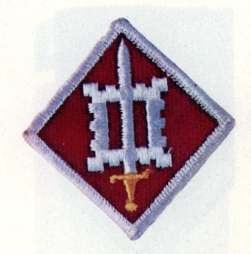 |
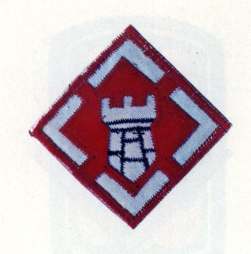 |
20th Engineer Brigade The history of the 20th Engineer Brigade extends back to the Civil War. The unit was constituted on Aug. 3, 1861. Unit designations have been changed many times since then, but the ancestors of the 20th Engineer Brigade have participated in campaigns in the Civil War, the Spanish-American War, the Philippine insurrection, the Mexican expedition, and World War I and II. The Brigade headquarters was reactivated May 1, 1967, and arrived in the Republic of Vietnam on Aug. 3, 1967. The 20th Brigade missions are to command assigned and attached units, provide operational support for the U.S. and free world forces, plan and execute construction, and provide for security of personnel, equipment, facilities and construction sites of assigned or attached units. Many of the Brigade's projects stand out as exceptional engineering achievements. Among these are restoration of National Highway (QL) 4 between Song Be and Dong Xoai, and the clearing of over a half-million acres of jungle. As the war's emphasis shifted to Vietnamization, the Brigade developed far-reaching programs of mutual assitance with the ARVN. At present, the ARVN is taking over an increasing amount of work, as evidenced by their restoration project on QL-1 and their three recently trained land clearing companies. The Brigade has been awarded the Republic of Vietnam Civic Actions Honor Medal, First Class, for assistance rendered to orphanages, schools and other pacification projects. |
| 1st Infantry Division The 1st Infantry Division was the first division to go overseas in World War I. During World War II, it was the first to reach Britain and France. On July 12, 1965, the 2nd Brigade of the Big Red One landed in the Republic of Vietnam, the first element of an infantry division to arrive. During five years in South Vietnam, the Big Red One Participated in many significant battles and operations such as Birmingham, Junction City, Billings, Shenandoah II, Quyet Thang, Loc Ning V, An Loc and Operation Toan Thang. July 1969 marked the beginning of a coordinated war effort by Big Red One soldiers and members of the Army of the Republic of Vietnam's 5th Division. This program, which is referred to as Dong Tien (progress together), resulted in victories over the enemy while preparing the ARVN soldier to assure security in his homeland. In December of 1969, President Nixon announced that the 1st Division would be one of the major elements of the Phase III redeployment. The Division was reduced in strength and moved to Fort Riley, Kan. |
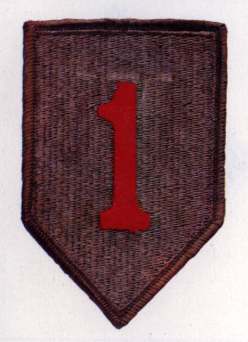 |
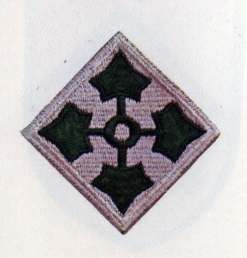 |
4th Infantry Division The history of the 4th Infantry Division dates back to 1917 when the division was organized at Camp Greene, N.C. During World War I, the Ivymen fought in the campaigns of Aisne - Marine, St. Mihiel and Meuse-Argonne. World War II brought the hard-driving 4th Division into action on the beaches of Normandy, in the drive on Cherbourg, in the liberation of Paris and at the battle of the Bulge. In 1966, the Division deployed to the Republic of Vietnam setting up a base camp near Dragon Mountain in Pleiku Province. The first task of the division was to cut off the flow of enemy men and materials into the Central Highlands from Cambodia and Laos - just about 12,000 square miles. The Communists suffered approximately 1,600 dead against the 4th in one of the bloodiest battles of the war at Dak To in October 1967. Throughout most of 1968, the Division conducted Operation MacArthur, which stopped NVA attempts to drive toward Kontum and Dak To. Leaving the Army of the Republic of Vietnam to continue the mission near Pleiku, the 4th took up its tasks at Camp Radcliff, near An Khe, in the spring of 1970. The Ivymen again answered the call during the Cambodian offensive in May and June of 1970. Upon the completion of their actions in Cambodia, they returned to An Khe and remained there until redeployment on Dec. 12, 1970, to Fort Carson, Colo. |
| 3rd Brigade, 9th Infantry Division Organized July 18, 1918, at Camp Sheridan, Ala., the 9th Infantry Division was in the United States when World War I came to an end. Reactivation took place in August 1940 at Fort Bragg, N.C., and subsequently the division took part in action in North Africa, on the Normandy beaches, across France, Belgium and Germany. After launching combat operations in South Vietnam in December 1966, the Old Reliables scored major triumphs, including victories against main force Viet Cong units, initiation of sustained operations in the Mekong Delta, formation of a Mobile Riverine Force, discovery of on of the largest enemy weapons caches in the war and suppression of VC control in four populous provinces and helped foster a spirit of cooperation between the government and its citizens through civic action programs. When the 9th became the first U.S. Army unit to redeploy from Vietnam in September and October 1969. The 3rd Bdg stayed in Tan An till End of Aug. 1970 then the 3RD BDG colors were sent to Ft Lewis for Deactivation Oct. 1970 . More Details on the History of Vietnam War and the Involvement of the 9th Infantry after Units Section, Checkout this link:9th Infantry Division Unit Histories (Vietnam) |
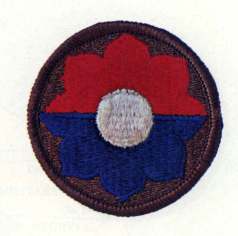 |
